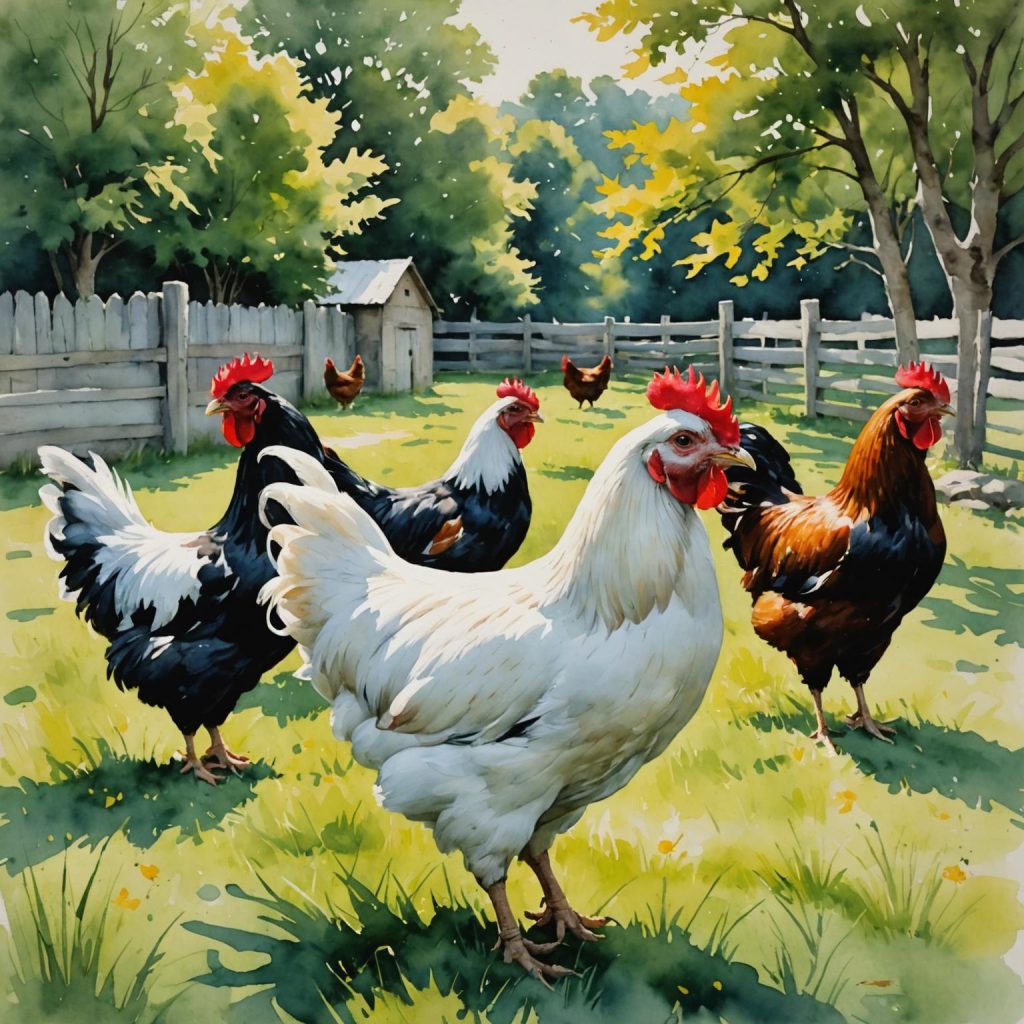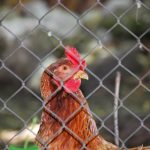When it comes to keeping your poultry safe, it’s important to understand the potential threats that may be lurking in your area. Common predators that pose a risk to chickens and other poultry include foxes, raccoons, coyotes, hawks, owls, and even domestic dogs and cats. Each of these predators has its own unique hunting behaviors and methods of accessing your coop, so it’s crucial to familiarize yourself with the specific threats in your region. For example, if you live in an area with a high population of foxes, you’ll need to take extra precautions to secure your coop against digging and burrowing. On the other hand, if you’re in an area with a large bird of prey population, you’ll need to focus on protecting your flock from aerial attacks. By understanding the predators in your area, you can better prepare and fortify your coop to keep your poultry safe.
In addition to natural predators, it’s also important to be aware of the potential threat posed by domestic animals. While it may be easy to overlook the risk of a neighbor’s dog or cat getting into your coop, these animals can be just as dangerous to your flock as wild predators. It’s essential to communicate with your neighbors and ensure that their pets are kept under control to prevent any potential attacks on your poultry. By identifying and understanding the common predators in your area, you can take proactive steps to protect your flock and minimize the risk of an attack.
Table of Contents
- 1 Fortifying Your Coop: Tips for Securing Your Poultry Housing
- 2 Implementing Predator-Proof Fencing: Best Practices for Keeping Predators at Bay
- 3 Nighttime Protection: Strategies for Keeping Your Chickens Safe While They Sleep
- 4 Predator Deterrents: Natural and Artificial Methods for Keeping Predators Away
- 5 Monitoring Your Flock: How to Keep an Eye on Your Chickens’ Safety
- 6 What to Do in the Event of an Attack: Steps for Responding to Predator Threats
Fortifying Your Coop: Tips for Securing Your Poultry Housing
Once you’ve identified the potential predators in your area, it’s time to focus on fortifying your coop to keep your poultry safe. One of the most important aspects of securing your poultry housing is ensuring that it is predator-proof. This means using sturdy materials such as hardware cloth or welded wire to prevent predators from gaining access to your coop. It’s also crucial to inspect your coop regularly for any signs of wear and tear, as even small holes or gaps can provide an entry point for predators. Additionally, consider adding predator-proof locks and latches to all doors and windows to further secure your coop against unwanted intruders.
Another important aspect of fortifying your coop is ensuring that it is well-ventilated while still being secure. Proper ventilation is essential for the health and well-being of your poultry, but it’s important to ensure that any openings are covered with predator-proof mesh or wire to prevent access by predators. Additionally, consider adding a predator apron around the perimeter of your coop to prevent digging and burrowing by predators such as foxes and raccoons. By taking these steps to fortify your coop, you can create a safe and secure environment for your poultry to thrive.
Implementing Predator-Proof Fencing: Best Practices for Keeping Predators at Bay
In addition to securing your coop, it’s important to implement predator-proof fencing around the perimeter of your poultry housing to further protect your flock. When it comes to predator-proof fencing, there are several best practices to keep in mind. First and foremost, it’s essential to ensure that your fencing is tall enough to deter predators from jumping or climbing over it. For most predators, a fence that is at least six feet tall is sufficient to prevent access to your poultry housing. Additionally, consider adding an overhang or “coyote roller” to the top of your fence to prevent predators from gaining a foothold and climbing over.
Another important consideration when implementing predator-proof fencing is the material used. While traditional chicken wire may be suitable for keeping chickens contained within a certain area, it is not sufficient for keeping predators out. Instead, opt for sturdy materials such as hardware cloth or welded wire that are more resistant to chewing and tearing by predators. Additionally, consider burying the bottom of your fence at least 12 inches underground to prevent digging by predators such as foxes and raccoons. By implementing predator-proof fencing around the perimeter of your poultry housing, you can create an additional layer of protection for your flock.
Nighttime Protection: Strategies for Keeping Your Chickens Safe While They Sleep
Nighttime poses a particularly vulnerable time for chickens, as many predators are nocturnal hunters. To keep your chickens safe while they sleep, it’s important to implement strategies for nighttime protection. One of the most effective methods for protecting your flock at night is ensuring that they are securely locked inside their coop. This means using predator-proof locks and latches on all doors and windows to prevent access by nocturnal predators such as raccoons and foxes. Additionally, consider adding motion-activated lights or alarms around your coop to deter potential predators from approaching during the night.
Another important aspect of nighttime protection is providing a safe roosting area for your chickens inside their coop. Ensure that roosts are elevated off the ground and away from windows or doors where predators may attempt to gain access. Additionally, consider adding partitions or dividers inside the coop to create separate sleeping areas for your chickens, which can help minimize the risk of an entire flock being targeted by a predator. By implementing these strategies for nighttime protection, you can help keep your chickens safe while they sleep and minimize the risk of a nighttime predator attack.
Predator Deterrents: Natural and Artificial Methods for Keeping Predators Away
In addition to fortifying your coop and implementing predator-proof fencing, there are several natural and artificial methods for deterring predators from approaching your poultry housing. One natural method for keeping predators away is the use of guardian animals such as dogs or geese. These animals can help deter potential predators from approaching your flock by their presence alone. Additionally, consider planting thorny bushes or shrubs around the perimeter of your poultry housing, which can create a natural barrier that deters predators from getting too close.
In addition to natural deterrents, there are also several artificial methods for keeping predators away from your poultry housing. One effective method is the use of predator deterrent devices such as motion-activated lights or alarms. These devices can startle potential predators and deter them from approaching your coop. Additionally, consider using predator scent deterrents such as coyote urine or other animal scents around the perimeter of your poultry housing, which can help create a natural barrier that deters predators from approaching. By utilizing both natural and artificial predator deterrents, you can create an additional layer of protection for your flock and minimize the risk of a predator attack.
Monitoring Your Flock: How to Keep an Eye on Your Chickens’ Safety
While implementing various security measures is crucial for keeping your chickens safe from predators, it’s also important to actively monitor your flock and keep an eye on their safety. Regularly inspecting your coop and surrounding area for signs of potential predator activity can help you identify and address any vulnerabilities before they become a problem. Additionally, consider installing security cameras around your poultry housing to keep an eye on your flock even when you’re not physically present. This can help you quickly identify any potential threats and take action to protect your chickens.
Another important aspect of monitoring your flock is observing their behavior for any signs of distress or unease. Chickens are often sensitive to changes in their environment and may exhibit signs of stress or fear if they sense a potential predator nearby. By paying attention to their behavior and body language, you can quickly identify any potential threats and take action to protect your flock. Additionally, consider establishing a neighborhood watch system with other poultry owners in your area to keep each other informed about any potential predator activity. By actively monitoring your flock and staying vigilant, you can help ensure their safety and well-being.
What to Do in the Event of an Attack: Steps for Responding to Predator Threats
Despite all efforts to secure your poultry housing and protect your flock, there is always a risk of a predator attack. In the event of an attack, it’s important to have a plan in place for responding to predator threats. First and foremost, ensure that all members of your household are aware of the potential risks and know how to respond in the event of an attack. This may include having a designated “safe room” where chickens can be quickly moved in the event of a predator threat.
Additionally, consider having a plan for contacting local authorities or wildlife services in the event of a predator attack. It’s important to report any incidents of predator activity in your area so that appropriate measures can be taken to address the issue. Finally, consider having a plan in place for addressing any potential injuries or losses resulting from a predator attack. This may include having first aid supplies on hand and knowing how to provide immediate care for any injured chickens.
In conclusion, protecting your poultry from predators requires a multi-faceted approach that includes understanding the potential threats in your area, fortifying your coop and implementing predator-proof fencing, providing nighttime protection, utilizing predator deterrents, actively monitoring your flock, and having a plan in place for responding to predator threats. By taking these proactive measures, you can help ensure the safety and well-being of your chickens and minimize the risk of a predator attack.
Meet Walter, the feathered-friend fanatic of Florida! Nestled in the sunshine state, Walter struts through life with his feathered companions, clucking his way to happiness. With a coop that’s fancier than a five-star hotel, he’s the Don Juan of the chicken world. When he’s not teaching his hens to do the cha-cha, you’ll find him in a heated debate with his prized rooster, Sir Clucks-a-Lot. Walter’s poultry passion is no yolk; he’s the sunny-side-up guy you never knew you needed in your flock of friends!







